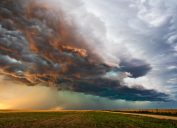34 Fascinating Facts About the Army That Deserve a Salute
From enormous robots to antique submarines, this branch of the Armed Forces has done it all.
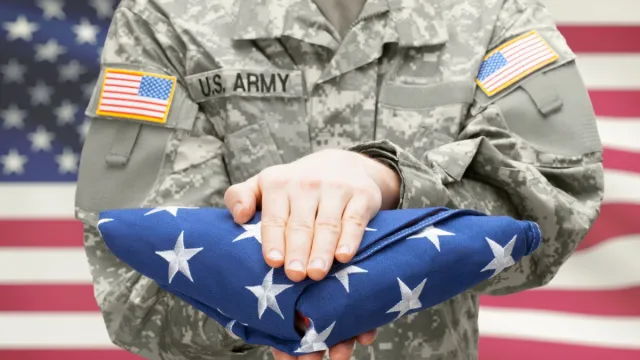
The Army is one of the major branches of the United States Armed Forces and is also one of the oldest and longest-lasting institutions in the country. It's been around for about 250 years, and with the U.S. spending more on the military than the next 10 highest-spending countries combined, it's not going anywhere anytime soon. In fact, thanks to its rich history, there is a wealth of trivia about the U.S. Army that you might not know, even if you served yourself. If you're curious to learn more, read on. We've rounded up 35 fascinating facts about the Army, each more unbelievable than the last.
RELATED: 22 Secrets of the One-Dollar Bill.
35 Amazing Army Facts
1. The Army is older than the country.
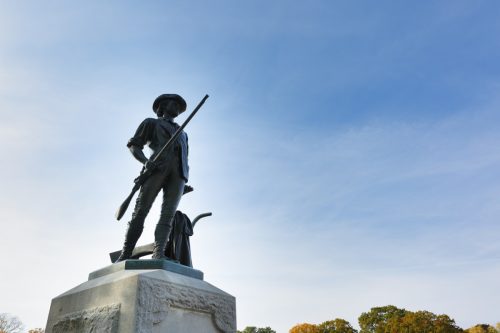
The measure to create a unified Continental Army to be led by George Washington was passed by the Second Continental Congress on June 14, 1775. So, technically, the United States has had an army for a year longer than it's been a country.
2. The Army pioneered modern guerrilla warfare.
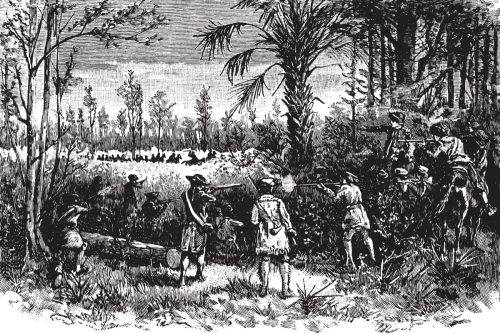
General Francis "Swamp Fox" Marion pioneered modern guerrilla warfare during the Revolutionary War. He traveled along swamp paths and led his men in surprise attacks against unsuspecting British forces. Then, they would withdraw just as unexpectedly as they'd popped up.
3. George Washington chose the Army's dress colors.
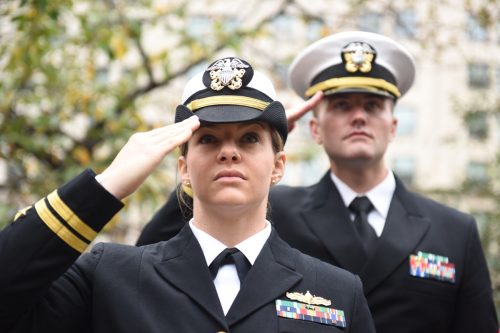
George Washington chose the Army's service dress colors in 1779. Though the Army has tried many color schemes over the years, in 2010, the branch went back to Washington's picks.
4. There have only been five five-star generals in the Army.
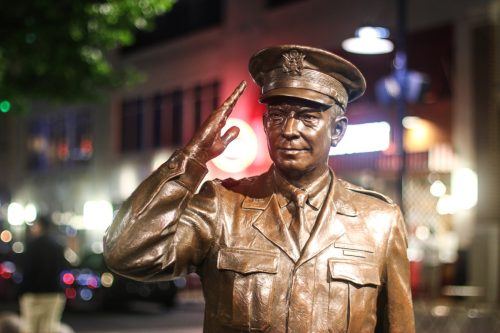
The rank of five-star general didn't exist until 1944, and it was only given to five men, including former president Dwight D. Eisenhower. The ranks were retired in 1981, when the last surviving five-star general, Omar Bradley, died.
5. The Army tested chemical agents on the United States.

In the '50s and '60s, the military used motorized blowers to blow zinc cadmium sulfide into the air over large swaths of the United States as part of Operation LAC (Large Area Coverage). The San Francisco Bay area, Saint Louis, parts of Minnesota, and the coasts of South Carolina and Georgia were all sprayed with the substance. Zinc cadmium sulfide was used because it's fluorescent, and the military was researching the potential dispersion of chemical and biological weapons.
6. The Air Force was part of the Army until 1946.
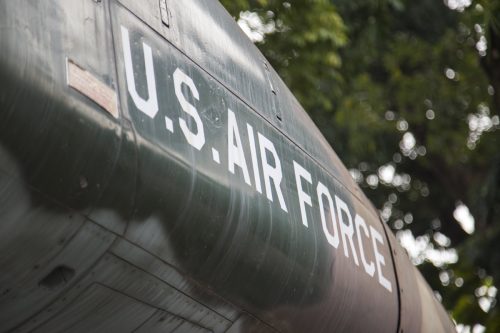
Until 1947, the Air Force was the Army Air Corps. The National Security Act of 1947 turned it into its own separate branch of our armed forces. Today, it also oversees the Space Force, the first new military branch created in over 70 years.
7. The Army has a special unit of skeptics.

Graduates from Fort Leavenworth's University of Foreign Military and Cultural Studies have been trained to play devil's advocate to avoid the pitfalls of groupthink that were happening in the military. Graduates of the program are called Red Teamers.
8. Over a third of Union Army soldiers were immigrants.
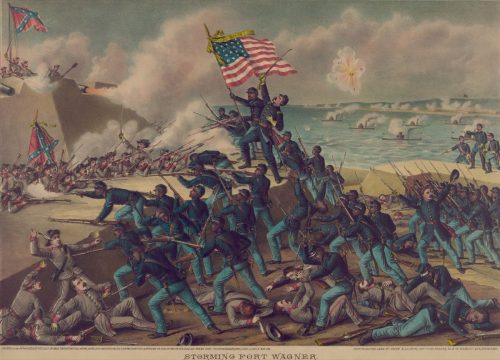
The Union would have had a tough time during the Civil War if it weren't for immigrants, who made up a third of the army, and Black men, who accounted for one-tenth of soldiers. In fact, in a quarter of all regiments, the majority of the troops were not born in the U.S.
9. The first submarine was used by the Army in the Revolutionary War.

The first documented submersible vehicle used in combat was the Turtle, which was operated with hand controls and foot pedals. The Turtle was used in a failed attempt to sink a British ship that was moored off Governors Island in New York City.
10. The ranger slogan was created during the Normandy invasion.

"Rangers lead the way" was adopted as the Army Rangers slogan during an exchange on Omaha Beach amid the Normandy Invasion. General Norman Cota said to Major Max Schneider, "If you're Rangers, lead the way!"
RELATED: 35 Weird Trademarks Celebrities and Companies Tried to Make Happen.
11. Coca-Cola had engineers in the army in WWII.

Coca-Cola president Robert Woodruff said that any servicemen in World War II should be able to get a bottle of Coke for a nickel, anywhere in the world, so Coca-Cola created the Technical Observer program to make it happen. There were 148 Technical Observers, who supervised the shipment and operation of 64 bottling plants. Technical Observers had an Army officer's rank and pay, as well as uniforms with a special patch to identify them. They distributed more than 5 billion bottles of Coke to soldiers.
12. The Army employs over one million personnel.

Currently, the Army employs 466,000 Regular Army, 435,000 Army National Guard, and 176,000 Army Reserve for a total of 1,077,000 uniformed personnel.
13. The Army is responsible for Ray-Bans.
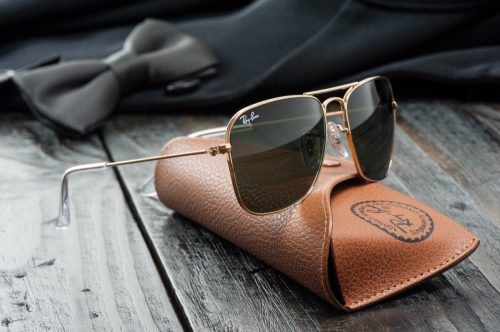
U.S. Army Air Corps Lieutenant General John MacCready asked Bausch & Lomb to make glasses for his pilots that would block the rays of the sun and reduce their nausea and headaches, and thus the company Ray-Ban was formed.
14. The swastika was a sleeve insignia until WWII.
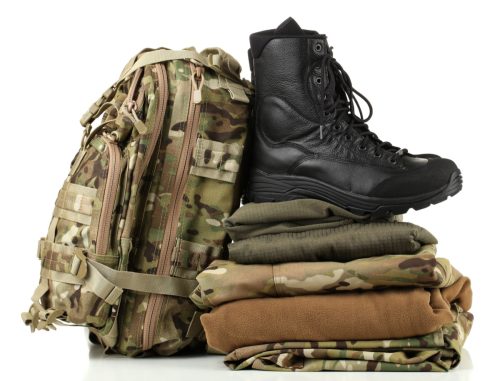
The 45th Infantry used a swastika as their sleeve insignia to honor their numerous Native American members, for whom it was a symbol of good luck. After the symbol was co-opted by the Nazis, the Infantry abandoned the symbol and settled on using the Thunderbird as their insignia thereafter.
15. The Army dumped 64 million pounds of nerve and mustard agents into the ocean.

In addition to the nerve and mustard agents, 400,000 chemical bombs, rockets, and land mines were also dumped at at least 26 different spots off the coast. The dumping took place post-WWII and carried on until 1970. The Army isn't entirely sure to this day where all the weapons were discarded.
16. PSYOPS taunted enemies by calling them "cowardly dogs."

The Army began using psychological tactics in battle starting back in 1918, though it wasn't until 1988 that the branch's psychological operations, or PSYOPS, became a formal regiment. During the war in Afghanistan, members of the PSYOPS team would lure enemies into fights they couldn't win by calling them "cowardly dogs" and "lady men."
17. The Army uses depleted uranium bullets.
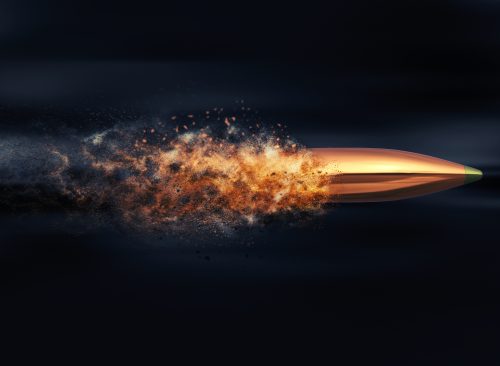
Depleted uranium ammunition can pierce armored vehicles. The energy released upon impact creates heat that causes the bullets to ignite. So, when a round makes it inside an armored vehicle, it can also ignite any ammunition that's inside the vehicle, along with fuel, which kills the crew and can even cause the vehicle to explode.
18. The father of the original military was gay.

The original Army was a ragtag crew of people in need of some serious training. In the 18th century, a Prussian officer named Baron Friedrich von Steuben was brought on to be the Army Inspector General and taught soldiers military drills, tactics, and discipline. At the time he was hired, he was fleeing France, where French clergy were demanding he receive punishment for being homosexual.
19. An entire island of people lost their homes for a military base.

Every inhabitant of the island of Diego Garcia, in British Indian Ocean Territory—over 1,000 in total—was kicked out by the British government to make room for a U.S. military base to be constructed. The inhabitants were relocated to Mauritius, mostly in slum neighborhoods. Mauritius only accepted the islanders after payment of £650,000.
RELATED: 35 Accidental Inventions That Dramatically Changed the World.
20. There are currently about 1,600 dogs in the armed forces.
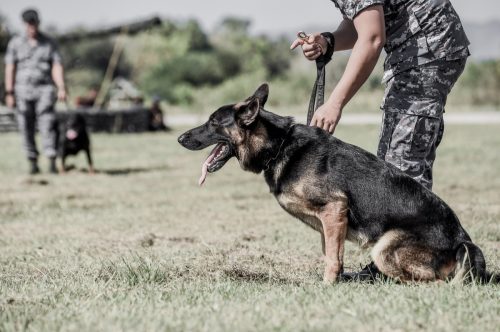
Military Working Dogs, or MWDs are trained in various methods of attack, detection, and patrol. The dogs can also specialize in narcotics or explosives detection. To serve, the pups must undergo 16 hours of training every month, in addition to quarterly evaluations.
21. The Army owns 24,000 square miles of land.

If all the land the Army owned were one state, it would be the 42nd largest state in the nation.
22. The Army has the highest number of military bases in the world.
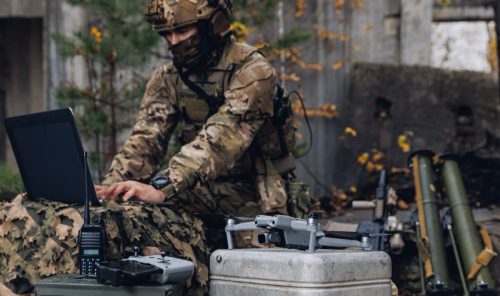
Not only that, but the number of bases established by the Army might top any number previously held in history, with the majority in Japan, Germany, and South Korea—120, 119, and 73, respectively. In total, there are about 750 U.S. military bases stationed in at least 80 countries around the world.
23. The draft was created during WWI to increase the Army's size.
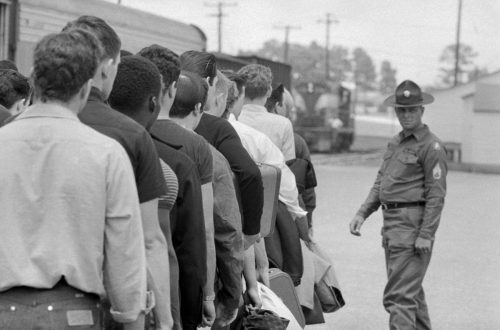
The Selective Service wasn't always around. It was created by the Selective Service Act of 1917 to increase the size of the military for World War I. During the Civil War there was a draft, but a person drafted could hire a substitute to fight in their place, and the Selective Service Act got rid of that provision. Before the law was passed, the Army only had 121,000 members. By the end of the war, 2.7 million men were drafted.
24. Sixteen presidents served in the Army.
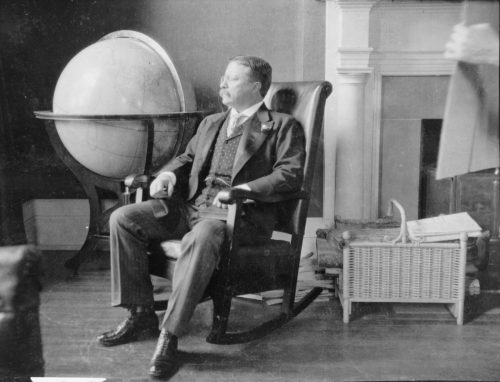
In total, 31 presidents have served in the United States Armed Forces, and 16 of those, including Theodore Roosevelt, served in the Army specifically. Of those 31, 24 presidents served during wartime.
25. The Army was the last branch to adopt an official song.

"The Army's Always There" by Sam Stept was nearly the Army's official song, but it sounded too much like "I've Got a Lovely Bunch of Coconuts," so it didn't make the cut. Finally, 181 years after its founding, the Army settled on "The Army Goes Rolling Along," a song set to the melody of an artillery tune, as its official song in 1956, making it the last branch of the Armed Forces to adopt a song.
26. It takes hundreds of pounds of batteries to power a short mission.

For an infantry platoon of 30 men to carry out a three-day mission, they have to carry 400 pounds of batteries to supply power to all of their equipment.
27. The Army mapped much of the United States.
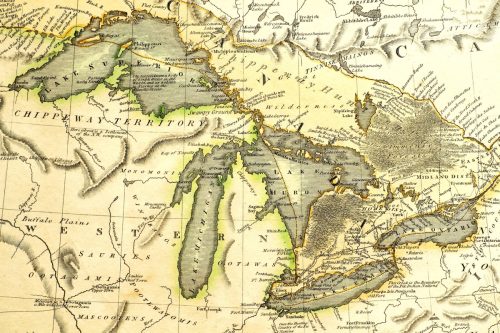
When the Army wasn't fighting in wars, they were out mapping the country. In fact, Army officers and noncommissioned officers made up the Lewis and Clark Expedition that helped map out the uncharted territory of the American West.
28. Washington wasn't eager to command the Army.
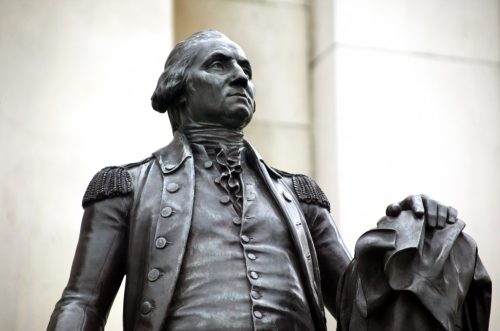
George Washington wasn't sure he was fit for the task of commanding the army. He expressed reluctance at the suggestion that he should lead, and thought he might not have adequate experience and skills to do the job.
29. The Army fired 1,400 artillery in Los Angeles.

The Great Los Angeles Air Raid of 1942 had the military firing 1,400 anti-air artillery, as well as countless .50 caliber rounds at an enemy aircraft. However, it turned out that the "enemy aircraft" everyone had been firing at was a lost weather balloon. No doubt itchy trigger fingers created by the attack on Pearl Harbor helped fuel the overreaction.
30. An enormous walking robot was created by the Army in 1968.
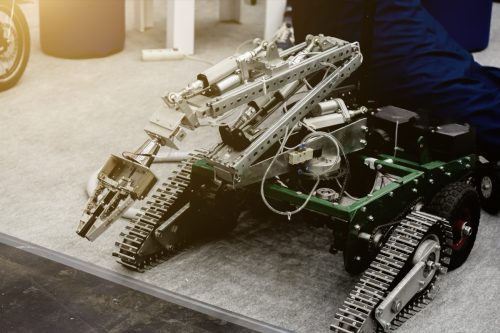
The Army invented an enormous robot called a walking truck to help infantry carry equipment over rough terrain. The robot, also called CAM (Cybernetic Anthropomorphous Machine) was controlled by hand and foot movements that were coupled to hydraulic valves. CAM weighed 3,000 pounds and was exhausting to use, with operators only being able to control it for limited amounts of time.
RELATED: 25 Space Mysteries No One Can Explain.
31. The first woman to serve in the army posed as a man.
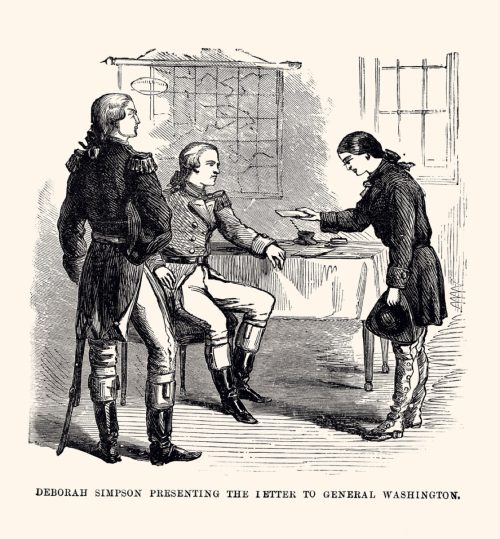
Born in Plympton, Massachusetts, Deborah Sampson enlisted in the United States Army back in 1782 using a fake male identity. She remained undetected during her military service until sustaining an injury in battle. She was the only woman to have earned a full military pension for her participation in the American Revolution.
32. Specialized Army units were deployed following the events of 9/11.
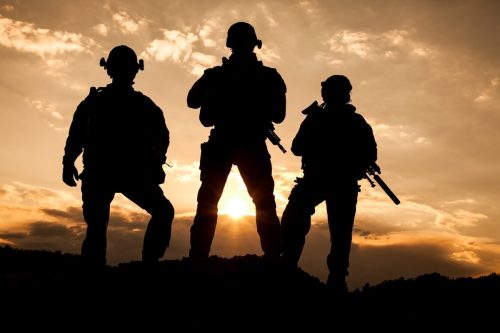
Though formally established back in 1984, the 75th Ranger Regiment, or the Army Rangers, has been continuously deployed following the attack on Sept. 11, 2001. Members of the regiment are specially trained in different types of special operations and combat missions.
33. The Army is the largest employer of musicians in the world.

Many individuals employed by the Army are not infantrymen, but musicians instead. These active duty service members are often called on for ceremonial performances or to host concerts designed to boost the morale among soldiers.
34. New regulations protect Army members' right to express themselves.

In 2021, the Army announced major changes to its standards concerning grooming and personal appearance. These modifications allowed service members to wear multiple hairstyles—including braids, twists, locks, and ponytails—as well as different hair and nail colors.
Wrapping Up
That's it for our list of army facts but be sure to check back with us soon for even more trivia! You can also sign up for our newsletter so you don't miss out on what's next.
- Source: THE U.S. ARMY AMERICA'S FIRST NATIONAL INSTITUTION
- Source: Historical Background of the U.S. Biologic-Warfare Program
- Source: National Security Act of 1947
- Source: ABOUT THE SPACE FORCE
- Source: Red Team Education
- Source: The Rangers of WWII: Leading the way for future generations
- Source: 100 years of subterfuge: the history of Army psychological operations
- Source: FOUR-LEGGED FIGHTERS
- Source: Aug. 10, 2011 - Secretary of the Army remarks at GovEnergy Conference, Cincinnati, Ohio.
- Source: Army returns to original song
- Source: CJCS discusses importance of 'energy' in today's military
- Source: NGA in History - Defining Moments
- Source: Ten Things You Didn't Know About the 75th Ranger Regiment (Part 1)
- Source: Army announces new grooming, appearance standards

